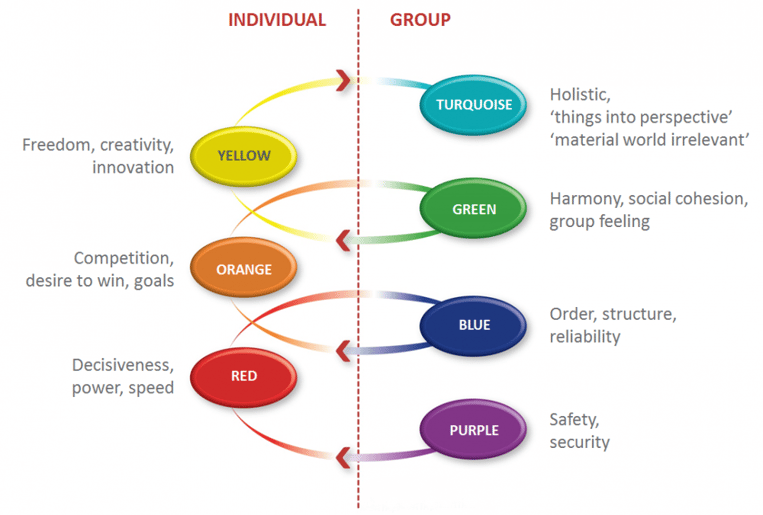Part 1 from Blog series Organizations survive only by disruptive personal leadership
How do organizations survive nowadays in the new digital age? The successful execution of management and leadership, which is essential hereby, has been subject to constant change over the years. We are currently reaching a critical crossover point again, which means that consequently a large portion of the current managers will probably be no longer successful in the near future. In my blog series “Organizations survive only by disruptive personal leadership”, I try to elaborate on the behaviors that made leaders big and important but don’t work anymore. Step by step I try to work towards a solution for this problem from a leadership point of view. Read more about how passion makes you a better leader and how entrepreneurship becomes a central focus within organizations again. Moreover, learn how the ‘Manager’ role herein transitions to ‘Leader’…. And find out why it doesn’t work yet.
This is no unique story. I have seen this happening continuously around me in business environments, both in small start-ups and large organizations. A lack of passion leads to many unwanted and unintended inefficiencies within an organization. What drives athletes to set the target to win the gold medal in the next Olympics and work towards it for 4 long years? Pure passion, clear objectives, focus, perseverance and belief in the result. But if you never exceed your limits, then the Olympics are over before they even begin. You must be able to jump the bar, or run the track faster than the others.
One of the reasons there is a lack of passion roots in the Peter Principle. Employees in a hierarchical organization rise until they reach their own incompetence level. The mechanism is based on the concept that an employee who radiates so much passion and skill in their first function (such as expert team member) makes him/her a candidate for promotion to a higher position. If they demonstrate the same skills and passion in the next position, as a team leader, the road to the next level is clear (team manager). This positive process stops as soon as the employee’s performance becomes inadequate, generally after the latest and highest position. The passion deteriorates at a fast pace. The employee seems not to have the skills required for the new position. From that moment on, their value for the organization quickly decreases. Even worse, they can even make a negative contribution to the organization. Unfortunately, returning to the previous position is not an option, because that implies that both the employee and the manager made a bad judgment or a mistake. This would blast a substantial hole in their ‘ego’ and, therefore, the manager mostly stays in the same position, despite the inefficiencies.
Fortunately, this form of inefficiency does not occur extensively in large organizations, right? And it never happens that the managers became big and important by playing deep-rooted political and ego games (and hereby hiding their own incompetencies). And these managers never seem to find their way back into new positions after reorganizations, right? And it hardly ever happens that layoffs are inevitable due to such mistakes, right? And luckily the layoffs never hit the employees. Right of not? Questions and more questions, and you already have a fair idea of the answers. The answers are not right and the real challenge is to find a solution and to be able to turn this around. The answer lies within ‘new’ leadership.
More about leadership? Join our Open Kitchen: Win with Agile Leadership and learn how to address important concerns about pursuing organizational Agility.
Why are things not working out with management and leadership?
In the previous section about pure passion, I presented the Peter Principle with some cynicism. Unfortunately, I have personally experienced the negative effects many times, and sometimes I was even guilty of it. But a long time back I decided to do it differently. That’s why I am increasingly centered around the subject: ‘How can I focus on passion and entrepreneurship to make an energetic and agile organization?’. I must admit that I have not found the silver bullet yet. But so far I have found out that the correct implementation of Servant Leadership forms the core of the solution.
The concept of Servant Leadership has been recently introduced in the current Agile era and now seems to have worn off its buzzword stage. Strangely, the first hair cracks of failure can already be detected. What could cause that? Haven’t we written everything about the correct implementation of Leadership already? And why can the managers still not get it right today? The answer is fairly simple, but very hard to implement properly. Let me emphasize this, as the correct implementation is also a personal quest for me, a lifelong journey. Therefore, I would love to hear your thoughts, to make the vision of this issue more specific, hopefully allowing for adequate implementation, so much for me as for others.
Let me stress a bit more why it is so difficult. In general, most managers with top positions in large organizations have the personal profile colors: Red, Orange and Yellow, as shown below.

The colors Red, Orange and Yellow are characterized as the ‘individual’ colors, and traditional managers generally have a high score on these colors. The other colors are more focused on the environment. The interesting thing is that these individual colors have helped the managers climb the hierarchical ladder. Yellow, by continuously finding new, resourceful solutions for innovations and escalations. Orange, by perfectly achieving the highly ambitious targets and always wanting to be the best. Red, by the ability of quick and powerful decision making even when others have doubts.
This behavior was ideal to succeed and now we tell the managers to stop displaying it. Changing this behavior sounds totally illogical for them and will never really cause positively changed behavior. The big question will always be, “WHY do we need this change?”.
What is going wrong?
The era of digital disruption has come. An era in which Real Customer Empowerment makes the difference. The product or service is now an extension of the user, enabling the user’s success in life and not just optimal user convenience. This demands a fundamental change in how organizations work. Next to this, the engagement and commitment levels of employees have reached their nadir (ground zero). Something really has to change! Therefore, organization models are completely turned sideways, creating end-to-end organization teams who essentially focus on improving the Customer Journey. IT is no longer a cost center, but instead, the lubricator that enables the required agility. Specialist employees are becoming key assets and leaders within the organization are responsible for delivering maximum added value for each team. Sigh... this sounds very logical, but we have ended-up with an organization without committed and engaged employees which is not able to compete with the fast-emerging start-ups. But where should we start with such an organizational transformation, when most traditional leaders will find this pivotal change very hard or impossible to make?
The adoption of an Agile way of working, including the values of Trust, Empowerment and Team play, prove to be essential for change. The color ‘green’ mostly possesses the right elements to make these values work. The cool thing is that we don’t need to change the preferred colors (red, orange and yellow), as this is not possible. We should use the colors in a different way and adopt a high dose of green in our normal life-style, just like servant leaders.
What changes with the Agile way of working? When Agile is introduced, Scrum is a self-evident work method. With Scrum, the roles of Scrum Master/ Agile Coach, Product Owner and Competence Lead are introduced. The Scrum Master provides optimal performance of the ‘stable’ team. The Agile Coach does the same for several stable teams, picking up on the organizational impediments. The Product Owner provides alignment of the stakeholder priorities and determines which functionality needs to be created. The Competence Lead ensures individual and organization-wide competence development within and across teams. If you paid attention as a manager, you may have noticed there is very little left for you to do within Agile. There have been many talks about managers no longer being necessary within Agile; what a nasty situation this has become. But fortunately, there is hope. You could play the role of Servant Leader - but what is this exactly?
In the rest of this blog series, I intend to increasingly highlight the manager role as Servant Leader.
I would love to hear your thoughts, to make the vision of this issue more specific, hopefully allowing for adequate implementation from many new leaders.
Stay tuned for the next post about Servant Leadership!





